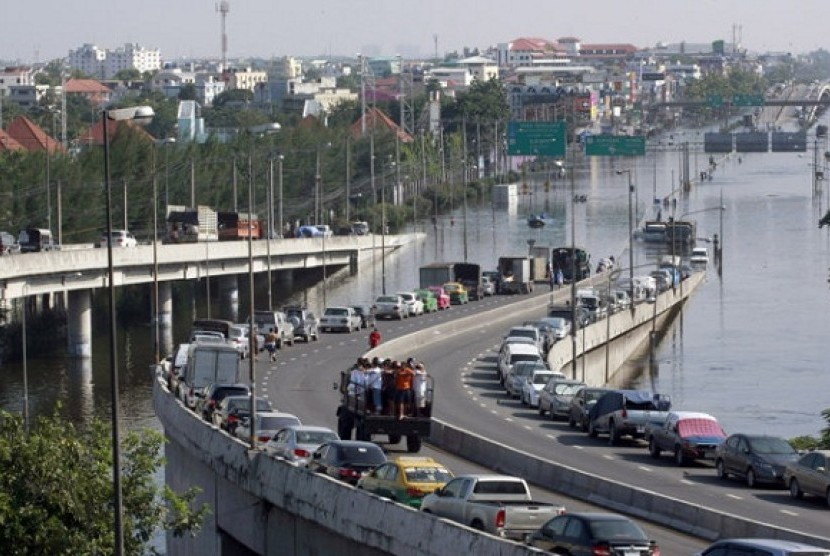REPUBLIKA.CO.ID, MIAMI - Southern Florida is one of those places that show up as partially under water in many sea level projections for this century. So it's no surprise local leaders are seeking ways to adapt. Four counties of South Florida, including Miami-Dade, have collaborated on a regional plan to respond to climate change. Their overarching goal: keeping fresh water inland and salt water away.
The first action plan calls for more public transportation, stemming the flow of seawater into freshwater, and managing the region's unique ecosystems so they can adapt.
Before writing the plan, the counties reviewed regional sea level data and projected a rise of 9 to 24 inches (23 to 61 cm) in the next 50 years along a coastline that already has documented a rise of 9 inches over the last 100 years.
"The rate's doubled. It would be disingenuous and sloppy and irresponsible not to respond to it," said Monroe County Administrator Roman Gastesi, who oversees the Florida Keys.
NEW YORK CITY
Mayor Michael Bloomberg last week announced one of the most ambitious plans for defending a major U.S. city from climate change. Recommendations range from installing removable flood walls in lower Manhattan to restoring marshes in Jamaica Bay in Queens, and from flood-proofing homes to setting repair timeframe standards for phone and Internet service providers.
In lower Manhattan, a removable system of posts and slats could be deployed to form temporary flood walls. The height would depend on the ground elevation and potential surge. The approach is used along some Midwestern rivers and in the Netherlands, city officials said.
Projects also include a 15-to-20-foot levee to guard part of Staten Island, building dunes in the Rockaways, building barrier systems of levees and gates to bar one creek from carrying floodwaters inland, and possibly creating a levee and a sizeable new "Seaport City" development in lower Manhattan.
BANGLADESH
A low-lying delta nation of 153 million people, Bangladesh is one of Asia's poorest countries, and one that faces extreme risks from rising sea levels. Its capital, Dhaka, is at the top of a list of world cities deemed most vulnerable to climate change, according to a recent survey by risk analysis company Maplecroft. The World Bank says a sea level rise of 5 inches (14 centimeters) would affect 20 million people living along the country's 440-mile (710-kilometer) coast. Many of these people would be homeless.
Bangladesh is implementing two major projects worth $470 million that involve growing forests on the coastal belt and building more multistory shelters to house people after cyclones and tidal surges. Developed nations have so far provided $170 million to the fund.
"Bangladesh is opting for adapting to the climate change impacts as the world's developed nations are not doing enough to cut down carbon emissions," said Forest and Environment Minister Hasan Mahmud in a recent speech in Dhaka. "We want the donors to contribute more to our efforts."
MALDIVES
The Maldives, an upmarket beach paradise for tourists, has also become a symbol of the dangers of climate change. Made up of hundreds of islands in the Indian Ocean, it's one of the most low-lying nations in the world, and exceptionally vulnerable to rising seas.
Some scientists have said the Maldives could disappear within decades, and former President Mohamed Nasheed even proposed relocating all 350,000 inhabitants to other countries. While other researchers say those fears may have been overblown, the country is taking measures to protect itself.
A seawall was built around the capital, Male, after flooding in the 1980s. That wall protected the city from the worst effects of the devastating 2004 tsunami, which temporarily put large swaths of the country under water.
The country's climate adaptation plans call for relocating residents from small vulnerable islands to bigger, better protected ones. It's also creating new land through land reclamation, expanding existing islands or building new ones, to ease overcrowding. The reclaimed land is being elevated to better withstand rising seas.


